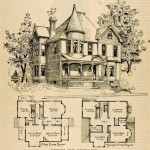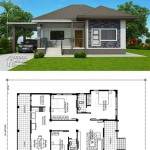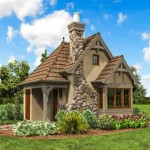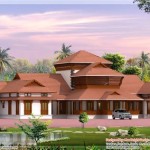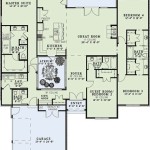Drafting house plans refers to the process of creating detailed blueprints for residential structures. These plans serve as visual guides for architects, engineers, and builders, providing a comprehensive representation of the house’s design, layout, and specifications. Drafting house plans is a fundamental step in the construction process, ensuring that all aspects of the project are meticulously planned and executed.
The drafting process typically involves several stages. It commences with conceptualizing the design, taking into account the client’s requirements, preferences, and the architectural style desired. Architectural software is then used to create digital representations of the plans, incorporating precise measurements, dimensions, and material specifications. The resulting blueprints provide a comprehensive visualization of the house’s interior and exterior spaces, including the arrangement of rooms, windows, doors, and other features.
Now that we have a basic understanding of the drafting process, let’s dive deeper into the various elements involved in drafting house plans.
When drafting house plans, meticulous attention should be paid to several key elements:
- Layout and flow
- Room sizes and proportions
- Window and door placement
- Material specifications
- Structural integrity
- Energy efficiency
- Aesthetics and curb appeal
- Budgetary constraints
Considering these factors ensures that the resulting house plan is both functional and visually appealing, meeting the needs of the occupants while adhering to building codes and regulations.
Layout and flow
Layout and flow refer to the arrangement and connectivity of spaces within a house plan. A well-planned layout optimizes the use of space, ensures smooth transitions between rooms, and creates a cohesive and functional living environment.
- Open floor plan: An open floor plan eliminates walls or barriers between common areas such as the living room, dining room, and kitchen. This creates a spacious and airy feel, allowing for easy movement and interaction between occupants.
- Closed floor plan: A closed floor plan features separate rooms for each function, providing more privacy and noise reduction. This layout is often preferred for larger homes or those with specific room requirements.
- Traffic flow: Traffic flow refers to the movement of people through the house. The layout should minimize bottlenecks and ensure that there is a logical flow from one room to another. This is especially important in areas such as hallways, doorways, and staircases.
- Room adjacencies: Room adjacencies refer to the placement of rooms in relation to each other. For example, it is common to have the kitchen adjacent to the dining room and living room, and the bedrooms adjacent to the bathrooms. Careful planning of room adjacencies can enhance convenience and functionality.
Optimizing layout and flow is crucial for creating a house plan that is both aesthetically pleasing and practical to live in.
Room sizes and proportions
Room sizes and proportions play a significant role in determining the functionality, comfort, and overall aesthetic appeal of a house. When drafting house plans, architects and designers must carefully consider the appropriate dimensions and proportions for each room, taking into account factors such as:
- Function and intended use: The primary function of a room dictates its minimum size requirements. For example, a bedroom should be large enough to accommodate a bed, dresser, and other necessary furniture. A living room, on the other hand, should be spacious enough for seating arrangements and entertainment.
- Building codes and regulations: Local building codes often specify minimum room sizes and ceiling heights to ensure safety and habitability. These codes vary by region, so it is important to consult with local authorities before finalizing house plans.
- Furniture placement: Room proportions should allow for comfortable furniture placement and circulation. Architects use space planning techniques to ensure that furniture can be arranged in a functional and aesthetically pleasing manner.
- Natural light and ventilation: The size and placement of windows and doors impact the amount of natural light and ventilation in a room. Proper consideration should be given to ensure that rooms are well-lit and airy.
In addition to the functional aspects, room sizes and proportions also contribute to the overall aesthetic of a house. Well-proportioned rooms create a sense of balance and harmony, while poorly proportioned rooms can appear awkward and uncomfortable.
Window and door placement
Window and door placement is a crucial aspect of drafting house plans, as it directly impacts the home’s natural lighting, ventilation, privacy, and overall aesthetic.
- Natural lighting: Windows are the primary source of natural light in a home. Their size, placement, and orientation can significantly impact the amount of light that enters a room. Architects carefully consider the placement of windows to maximize natural light while minimizing glare and heat gain.
- Ventilation: Windows and doors also serve as ventilation points, allowing for the circulation of fresh air throughout the house. Proper placement of windows and doors creates cross-ventilation, which helps to remove stale air and bring in fresh air from the outside.
- Privacy: The placement of windows and doors should also consider privacy concerns. Windows facing public areas should be placed higher up on the wall or obscured by curtains or blinds. Doors should be positioned to minimize visibility into private areas of the house.
- Aesthetic appeal: Windows and doors are not just functional elements; they also contribute to the overall aesthetic of a house. Their size, shape, and style should complement the architectural style of the house and enhance its curb appeal.
In addition to these factors, architects also consider the following when placing windows and doors:
- Building codes and regulations: Local building codes often specify minimum window sizes and placement requirements to ensure safety and habitability.
- Furniture placement: Window and door placement should take into account furniture placement to avoid blocking natural light or creating awkward circulation patterns.
- Views and vistas: Windows can be strategically placed to capture scenic views or frame outdoor spaces.
Careful consideration of window and door placement during the drafting stage ensures that the resulting house plan maximizes natural lighting, ventilation, privacy, and aesthetic appeal.
Material specifications
Material specifications are an integral part of drafting house plans, as they define the materials to be used in the construction of the house. Careful selection of materials is crucial for ensuring the structural integrity, durability, and aesthetic appeal of the building.
Architects and designers must consider various factors when specifying materials, including:
- Structural requirements: The materials used for the foundation, framing, and roof must meet the structural requirements of the house. Factors such as the size, shape, and location of the house will influence the choice of materials.
- Durability and longevity: The materials used should be able to withstand the elements and last for the intended lifespan of the house. This includes resistance to weather, pests, and wear and tear.
- Energy efficiency: The materials used should contribute to the energy efficiency of the house. This includes insulation materials, windows, and doors that minimize heat loss and gain.
- Cost: The cost of materials is a significant factor to consider when drafting house plans. Architects work closely with clients to determine the budget for materials and select options that meet both functional and financial requirements.
Material specifications also include details on the finishes and fixtures to be used in the house. This includes materials for flooring, countertops, cabinetry, and appliances. These choices impact the overall aesthetic and functionality of the house.
Structural integrity
Structural integrity refers to the ability of a house to withstand external forces such as gravity, wind, snow, and earthquakes without collapsing or failing. Ensuring structural integrity is a critical aspect of drafting house plans, as it directly impacts the safety and longevity of the building.
To achieve structural integrity, architects and engineers must carefully consider the following factors:
- Foundation: The foundation is the base of the house and must be strong enough to support the weight of the entire structure. The type of foundation required will depend on the soil conditions and the size and shape of the house.
- Framing: The framing is the skeleton of the house and provides support for the walls, roof, and floors. The framing system must be designed to resist lateral forces such as wind and seismic activity.
- Materials: The materials used for the framing and other structural components must be strong and durable. Common materials used include wood, steel, and concrete.
- Connections: The connections between the different structural components must be strong enough to transfer loads safely. This includes connections between the foundation and framing, and between the framing and the roof and walls.
In addition to these factors, architects and engineers also consider the following when designing for structural integrity:
- Building codes and regulations: Local building codes often specify minimum structural requirements to ensure the safety of buildings. These codes may vary depending on the region and the seismic activity in the area.
- Site conditions: The soil conditions and topography of the building site can impact the structural design of the house. For example, houses built on slopes or in areas with poor soil conditions may require additional structural support.
- Architectural design: The architectural design of the house can also affect its structural integrity. For example, houses with large open floor plans or complex rooflines may require additional structural support.
Energy efficiency
Energy efficiency refers to the ability of a house to minimize energy consumption while maintaining a comfortable indoor environment. Incorporating energy-efficient features into house plans is becoming increasingly important as homeowners seek to reduce their energy bills and environmental impact.
Architects and designers can employ various strategies to enhance the energy efficiency of a house, including:
- Insulation: Insulation is a crucial element in reducing heat loss and gain through the building envelope. Proper insulation in the walls, roof, and floor can significantly improve the thermal performance of the house.
- Windows and doors: Windows and doors are potential sources of heat loss and gain. Energy-efficient windows and doors feature double or triple glazing, low-e coatings, and tight seals to minimize heat transfer.
- Air sealing: Air sealing involves sealing gaps and cracks around windows, doors, and other openings to prevent air leakage. This helps to maintain a consistent indoor temperature and reduce energy consumption.
- HVAC systems: Heating, ventilation, and air conditioning (HVAC) systems account for a significant portion of energy use in a house. Energy-efficient HVAC systems, such as heat pumps and geothermal systems, can drastically reduce energy consumption while providing comfortable indoor temperatures.
In addition to these measures, architects and designers also consider the following factors when designing for energy efficiency:
- Building orientation: The orientation of the house on the building site can impact its energy efficiency. For example, houses oriented to the south in the Northern Hemisphere can take advantage of passive solar heating.
- Passive solar design: Passive solar design involves using the sun’s energy to heat and light the house naturally. This can be achieved through the use of south-facing windows, thermal mass, and overhangs.
- Renewable energy sources: Incorporating renewable energy sources, such as solar panels and geothermal energy, into house plans can further reduce energy consumption and environmental impact.
By carefully considering energy efficiency during the drafting stage, architects and designers can create house plans that minimize energy consumption, reduce energy costs, and contribute to a more sustainable built environment.
Aesthetics and curb appeal
Aesthetics and curb appeal are important considerations when drafting house plans, as they influence the overall visual appearance and attractiveness of the house.
- Architectural style: The architectural style of the house should complement the surrounding neighborhood and reflect the homeowner’s personal taste. Popular architectural styles include traditional, modern, contemporary, and craftsman.
- Exterior materials and finishes: The choice of exterior materials and finishes, such as siding, roofing, and trim, can significantly impact the aesthetic appeal of the house. Architects consider factors such as durability, maintenance, and visual compatibility when selecting these materials.
- Landscaping: Landscaping plays a crucial role in enhancing the curb appeal of a house. Thoughtful placement of trees, shrubs, and flowers can complement the architectural style and create a welcoming outdoor space.
- Outdoor living spaces: Outdoor living spaces, such as patios, decks, and porches, extend the living area and provide opportunities for outdoor enjoyment. Architects design these spaces to seamlessly connect with the interior of the house and maximize views of the surrounding landscape.
By carefully considering aesthetics and curb appeal during the drafting stage, architects can create house plans that not only meet the functional needs of the occupants but also enhance the overall beauty and value of the property.
Budgetary constraints
Budgetary constraints are a significant factor to consider when drafting house plans. Architects and designers must strike a balance between creating a functional and aesthetically pleasing house while adhering to the client’s financial limitations.
During the initial consultation, the architect or designer will discuss the client’s budget and work with them to determine the scope of the project. This includes setting realistic expectations and exploring cost-saving options without compromising the overall quality of the house.
One way to manage budgetary constraints is to prioritize the client’s needs and allocate funds accordingly. For example, if the client values energy efficiency, the architect may recommend investing in high-performance windows and insulation, while reducing on less essential features.
Another strategy is to explore alternative materials and construction methods that offer a balance between cost and quality. For instance, using prefabricated components or opting for a simpler roof design can potentially reduce construction costs without sacrificing the overall design intent.
By carefully considering budgetary constraints during the drafting stage, architects and designers can create house plans that align with the client’s financial capabilities while still meeting their functional and aesthetic needs.










Related Posts


